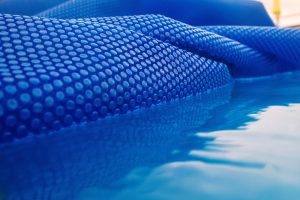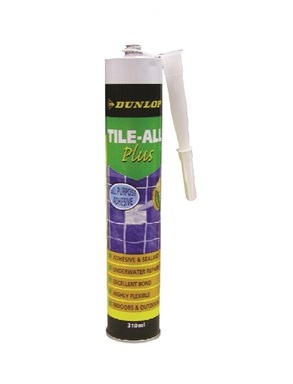Hi all,
We have a fully tiled concrete pool built circa 1970 that's having some trouble this summer in Sydney, Australia. I'm finding the tiles are coming away from the pool surface in various places. This has happened before but not anywhere near as frequently as this summer. We bought the house three years ago and the previous owner left a stash of missing tiles behind, so it's been a problem for a while, but I'm not sure how frequently they fell off before we purchased it.
It may have something to do with the water imbalance. I've recently discovered that the CYA test on all the test strips I was using over the past year is not reacting to CYA properly, so I've added far more CYA than I should have! I've had a lot of issues with cloudy water, algae (or pollen?), and fluctuating PH, which I assume is because of the CYA. We've had quite a bit of rain in Sydney this summer, but I've not had this issue during the previous very rainy summers. I only realised that the CYA test wasn't working when I purchased another cheap strip test which showed high CYA, so I had the water tested by a pool shop which showed the same results. I then tested the same water with two other test strips, one of the exact same brand as I was using, and both were consistent with the pool shop and cheap test strip results. Lesson learned for using test strips I want to get a decent test kit instead.
I want to get a decent test kit instead.
So, I'm planning on draining a lot of water from the pool and replacing it to rebalance the CYA, then repair the pool tiles. Quite a few tiles have come loose from the bottom of the pool, but I don't want to drain the entire pool to replace the tiles if I can help it. Before I do that, I wondered if I could ask the experts here a few questions to make sure I'm on the right track.
* Is the high CYA likely the cause of the tiles coming loose, or is that a red herring? The Poolmath app says my CSI levels look good (!?!?)
* What's the best way to repair the tiles underwater? The previous owner seems to have used epoxy but I'm not sure if that's the best option. Most posts I can find on this forum mention waterline tiles and draining the pool a little, but I really don't want to drain the entire pool.
* I also find sand in the Polaris cleaner bag, which may be from the grout, but could also be due to a pool filter issue (sand filter). Thoughts?
Latest test results are below:
TA: 12.05
FC: 12.05
CC: 0
pH: 7.2
TA (adj): 20.33
CYA: 134
TH: 162
CH: 162
Phosphates: 0
Copper: 0
Temperature is around 26-30 degrees Celcius.
Any help would be much appreciated!
We have a fully tiled concrete pool built circa 1970 that's having some trouble this summer in Sydney, Australia. I'm finding the tiles are coming away from the pool surface in various places. This has happened before but not anywhere near as frequently as this summer. We bought the house three years ago and the previous owner left a stash of missing tiles behind, so it's been a problem for a while, but I'm not sure how frequently they fell off before we purchased it.
It may have something to do with the water imbalance. I've recently discovered that the CYA test on all the test strips I was using over the past year is not reacting to CYA properly, so I've added far more CYA than I should have! I've had a lot of issues with cloudy water, algae (or pollen?), and fluctuating PH, which I assume is because of the CYA. We've had quite a bit of rain in Sydney this summer, but I've not had this issue during the previous very rainy summers. I only realised that the CYA test wasn't working when I purchased another cheap strip test which showed high CYA, so I had the water tested by a pool shop which showed the same results. I then tested the same water with two other test strips, one of the exact same brand as I was using, and both were consistent with the pool shop and cheap test strip results. Lesson learned for using test strips
So, I'm planning on draining a lot of water from the pool and replacing it to rebalance the CYA, then repair the pool tiles. Quite a few tiles have come loose from the bottom of the pool, but I don't want to drain the entire pool to replace the tiles if I can help it. Before I do that, I wondered if I could ask the experts here a few questions to make sure I'm on the right track.
* Is the high CYA likely the cause of the tiles coming loose, or is that a red herring? The Poolmath app says my CSI levels look good (!?!?)
* What's the best way to repair the tiles underwater? The previous owner seems to have used epoxy but I'm not sure if that's the best option. Most posts I can find on this forum mention waterline tiles and draining the pool a little, but I really don't want to drain the entire pool.
* I also find sand in the Polaris cleaner bag, which may be from the grout, but could also be due to a pool filter issue (sand filter). Thoughts?
Latest test results are below:
TA: 12.05
FC: 12.05
CC: 0
pH: 7.2
TA (adj): 20.33
CYA: 134
TH: 162
CH: 162
Phosphates: 0
Copper: 0
Temperature is around 26-30 degrees Celcius.
Any help would be much appreciated!



